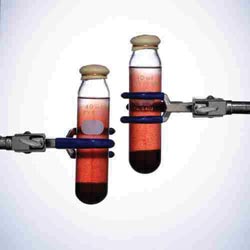A desire for clean and renewable energy gave birth to the photovoltaic industry. The bad news is that many of its key components are environmental pollutants.
Solar energy is touted as a green and clean energy source, but that may be only in comparison to fossil fuels. Looking at the life cycle of solar energy, there are many areas in which it is not so green. Solar panels are made with potentially toxic, explosive and even carcinogenic materials such as cadmium and selenium.

Strict take-back and recycling policies will help prevent possible toxic waste from expired solar panels from harming the environment. Photo courtesy of SVTC.
The US, European Union (EU) and Japan have regulations in place regarding known hazardous materials. However, questions remain about countries with little or no regulation, and also about new materials that have not been adequately tested.
The most common photovoltaic (PV) technology is based on silicon semiconductors, with roots in an industry that has learned some difficult environmental lessons. Twenty years ago, residents of Silicon Valley in California sued five semiconductor manufacturers for polluting groundwater. The industry took a heavy hit in terms of public relations, and the companies involved suffered financially because they had to clean up the mess they caused.

Cadmium telluride, a hazardous material used in PV panels, is handled with care. Photo courtesy of the US Department of Energy.
Sheila Davis, executive director of the Silicon Valley Toxics Coalition (SVTC) in San Jose, Calif., acknowledged that one lesson learned from the electronics industry that can be applied to solar is: “When things look clean on the surface, they’re not always clean.”
Faced with increasing demand for silicon-based photovoltaics, manufacturers now have the opportunity to take environmental responsibility and sustainability very seriously.
Things have changed
Truly sustainable alternate energy technologies produce more power than the amount used in their manufacture. In the 1970s, during the first solar boom, the technology was criticized for its consumption and emissions. All that has changed, according to the article “Emissions from Photovoltaic Life Cycles,” published Feb. 6 in Environmental Science & Technology.
Based on studies conducted at the National PV Environmental Research Center at Brookhaven National Laboratory in Upton, N.Y., at Columbia University in New York and at the Copernicus Institute of Sustainable Development in the Netherlands, the article reports that, for each unit of energy that solar cells produce, the net emissions during manufacture are between 2 and 11 percent of what power plants would emit to make the same amount of energy. Manufacturing solar cells today is less taxing to the environment because PV panels now contain about one-third as much purified silicon as they did 30-some years ago. Thin-film technologies use even less.
But cleaner doesn’t necessarily mean the technology is as clean as it could be. SVTC recently launched the Campaign for a Just and Sustainable Future in Solar Energy initiative, with a “cradle to cradle” approach. The coalition’s Extended Producer Responsibility code requires that manufacturers focus on the full life cycle of their products – beginning with using nontoxic materials, practicing safety in manufacturing and having a take-back policy, which ensures that products are recycled in a responsible manner.
The Emergency Planning and Community Right to Know Act passed by Congress in 1998 established requirements for reporting toxic chemicals. However, the requirements are based on the quantity of the toxic material found in end products and, therefore, may exempt nanomaterials. This is of concern because some nanomaterials are extremely toxic, even in tiny amounts.
In the EU, the Waste Electrical and Electronic Equipment (WEEE) and the Restriction of Hazardous Substances (RoHS) directives were established in 2003, both of which are intended to minimize electronic waste. In 2006, RoHS was expanded to cover toxic substances sold on the EU market. Japan, the leader in PV manufacturing, has no restrictions either on materials or on recycling.
Regardless of restrictions, a green and clean approach would limit or eliminate use of toxic materials from the start. SVTC recommends phasing out chemicals such as lead, cadmium, mercury, chromium, hydrogen selenide, arsenic and more. It also suggests developing manufacturing methods that do not result in waste silicon tetrachloride.
The coalition is working with the EPA to quantify and define green products, but there currently are no standards for “green” solar panels. The group also encourages reuse of silicon from computers and other electronics as well as exploration of organic and inorganic crystals that pass a “green chemistry” test.
In the EU, electronics companies must take back their products at the end of their life cycle. In the US, it is on a state-by-state basis, but so far 15 states have mandated take-back. Some major electronics firms also have instituted their own policies, including Dell, Hewlett-Packard and Sony, and solar firms also are catching on.
The potential for harnessing the sun to provide the power we need is huge, but it is not without a cost to the environment if those involved with every link in the supply chain are not cognizant of the risks involved. SVTC’s Davis sees this as an opportunity for businesses to be responsible for themselves. “Set up the supply chain so there’s not any excuse for anyone not knowing what’s in the product.”
With all eyes on the solar industry right now, market leaders can serve as a model not only for how to be profitable while solving energy problems but also for how electronics and other manufacturing can be green from cradle to cradle.